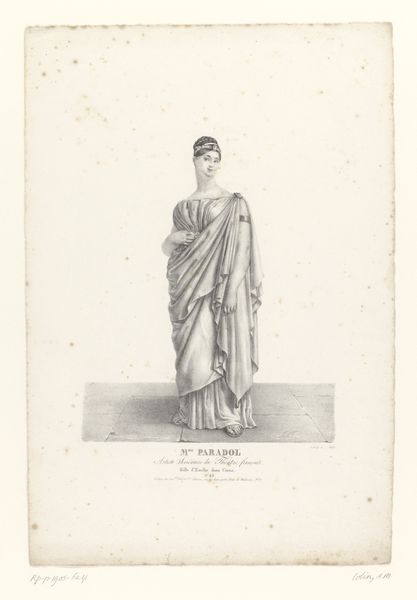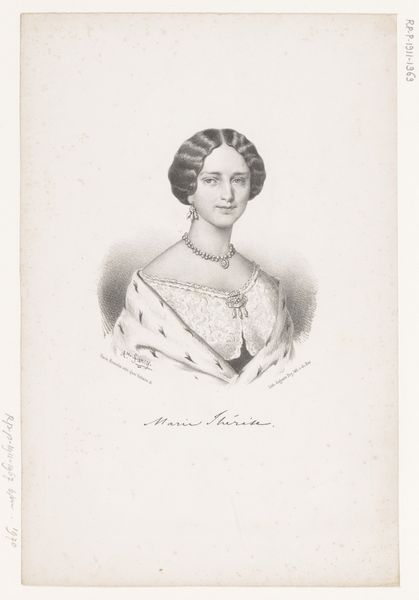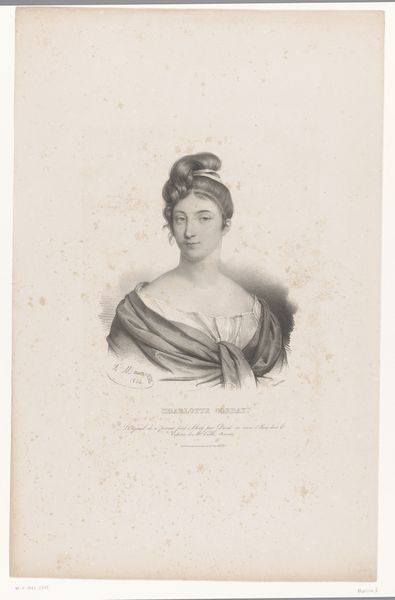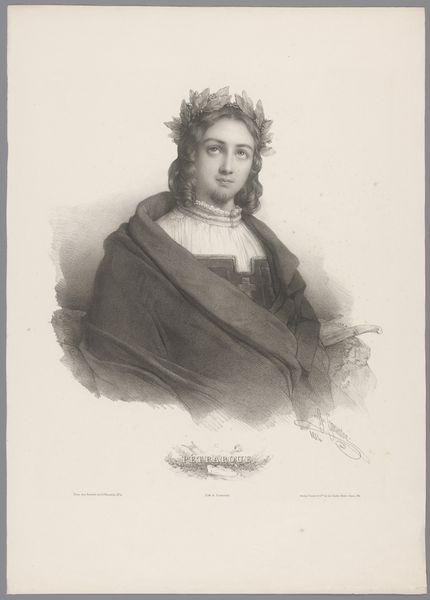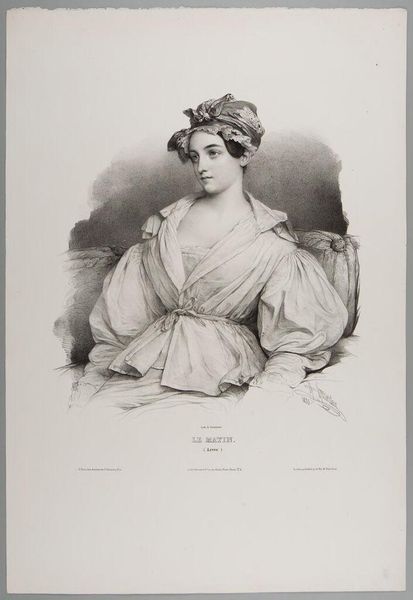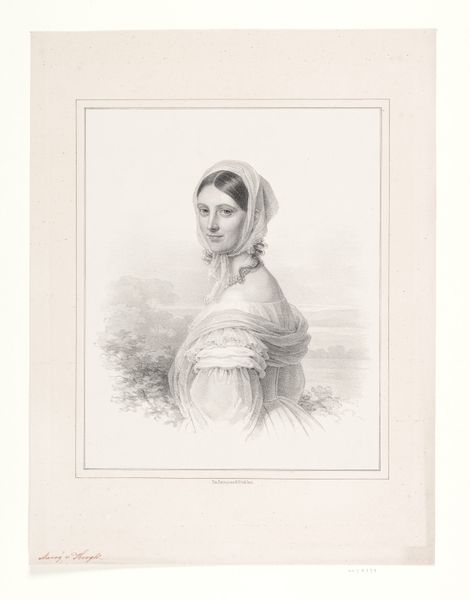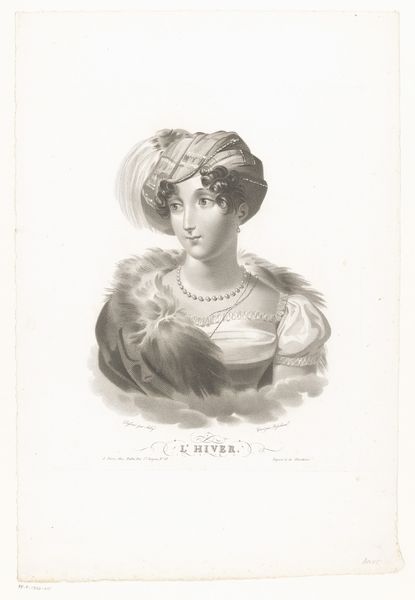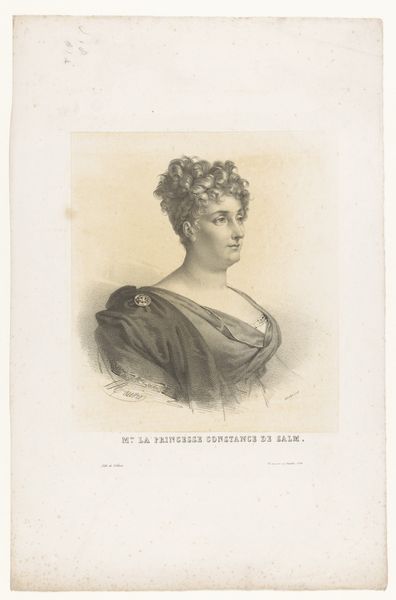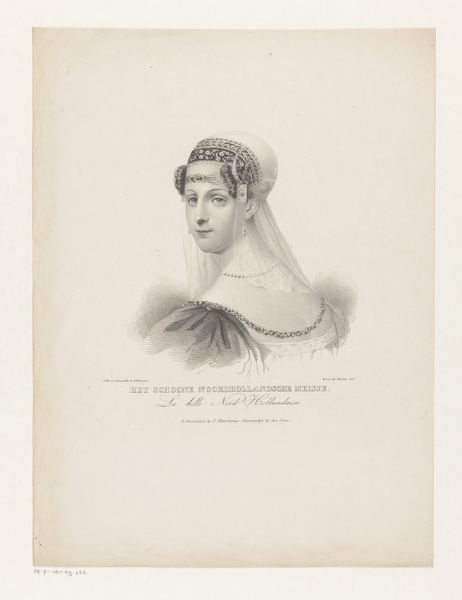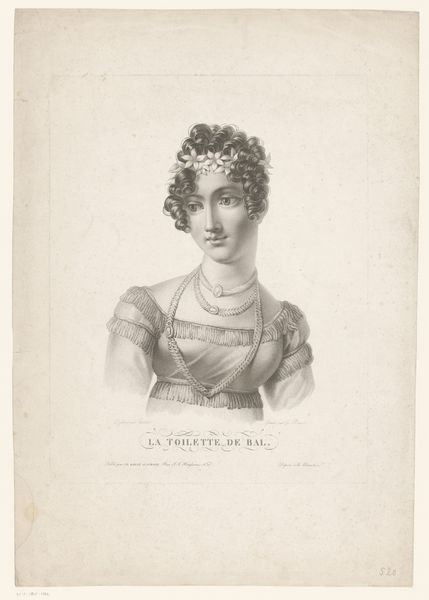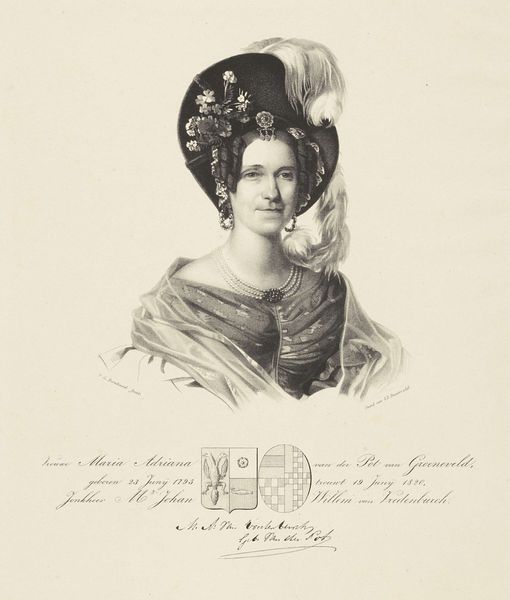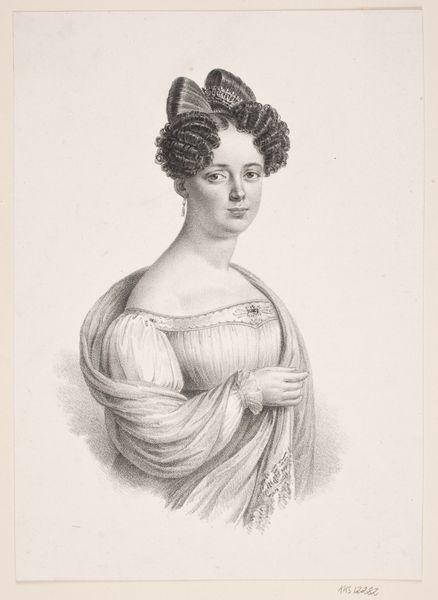
Dimensions: height 245 mm, width 170 mm
Copyright: Rijks Museum: Open Domain
Curator: Here we have a portrait, "Portret van Rachel," dating from between 1827 and 1905 by Desguerrois & Co. at the Rijksmuseum. It's rendered in pencil, which is something we should consider further. Editor: The initial impression is rather classical; the figure's pose and drapery give her a sculptural quality, almost like a marble bust. There's a subdued, melancholic air. Curator: It's tempting to read this image through the lens of Romanticism; that interest in emotion and idealised representations. Considering the probable timeframe of its creation, understanding who Rachel was is very important. If the sitter was famous for something, it should dictate the lens to adopt for analyzing this work. Her fashion alludes to ancient Greece or Rome and her representation, including the chosen medium, makes her palatable for 19th century audiences. Editor: The use of pencil lends itself to a reproducible medium – the making of prints, for example, or even mass distributed lithographs. Did the artist lean into pencil as a cost effective and more social method of distributing portraiture during the period? Pencil is less ‘precious’ a medium compared to paints – how does this influence the perception of status of the subject in the artwork and their relationship to it? Curator: It’s relevant how this approach impacts perceptions of the sitter, definitely. There is some power at play when a subject chooses how they want to be presented to the world. She's carefully constructed here as a respectable lady from her hair down to the folds of her toga-like garb. We are invited into Rachel’s performance as this carefully rendered image, regardless of the reality behind it. Editor: And what of the paper itself, the subtle tonal gradations achieved? It would be fascinating to uncover more about the materials readily available to the artist. The pencil marks allow one to visualize how it may have been constructed layer by layer, what techniques allowed the creator to construct such a naturalistic, flattering likeness, so easily available. Curator: I completely agree. It serves as a material record of aesthetic and representational politics in a certain period, which should be read in relation to our present day concerns. Editor: A pertinent perspective, allowing us to delve deeper into how images and representations evolve over time. Thank you.
Comments
No comments
Be the first to comment and join the conversation on the ultimate creative platform.
